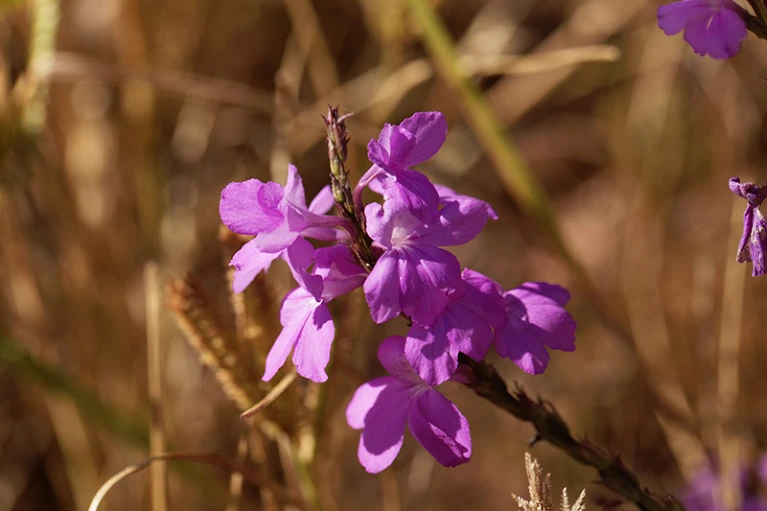Scientists in the global south use the popular technique to protect local crops against local threat
Molecular biologist Steven Runo once thought that his team would make history as the first to plant gene-edited seeds in African soil. The competition turned out to be stiffer than he’d anticipated.
A research group working on maize “beat us by two or three months”, says Runo, who works at Kenyatta University in Nairobi and whose gene-editing project focuses on sorghum. “But that’s good — African countries will see that this is actually possible.”
The friendly rivalry is a sign of progress. Researchers have long hoped that the relative ease and low cost of CRISPR gene-editing systems would make it possible for scientists in low- and middle-income countries to produce crops with traits tailored to the needs of local farmers — rather than relying on seeds developed in foreign countries. Now scientists are overseeing at least a dozen efforts to develop such gene-edited crops.
Among those projects is Runo’s effort to engineer sorghum to be resistant to Striga hermonthica, a troublesome species of a parasitic plant known as witchweed. Field trials of the new variety are scheduled for later this year, Runo said at the Plant and Animal Genome Conference in San Diego, California, on 16 January.
“It’s not as easy as people make it out to be to do gene editing, but it is pretty accessible,” says Kevin Pixley, a research director at the International Maize and Wheat Improvement Center in Texcoco, Mexico. “Runo is a perfect example of that.”
CRISPR takes on a witchy weed
Sorghum is a hardy crop that is used widely in Africa for food, building materials and feedstock. But more than 60% of African farmland is contaminated with species of Striga, a parasitic plant that attaches itself to sorghum roots and siphons away nutrients and water. A witchweed infestation can wipe out an entire crop.
Some wild varieties of sorghum are resistant to Striga because they carry mutations that alter the crop’s production of compounds called strigolactones, which promote germination of Striga seeds. Runo and his collaborators have used CRISPR–Cas9 to mimic these mutations.

Under Kenya’s 2022 regulations governing gene-edited crops, such plants are treated like conventionally bred crops because they do not contain DNA from another species. This means that these gene-edited plants can bypass some of the heavy testing and requirements imposed on genetically modified crops that contain foreign DNA. Nigeria and Malawi have similar policies, and other African countries, including Ethiopia and Uganda, are expected to follow suit, Runo says.
Last year, Kenyan authorities gave Runo and his collaborators permission to grow the gene-edited seeds under those regulations, and he plans to launch field studies later this year. It is a significant step, Runo said at the conference, because Striga is not a problem in wealthier regions — meaning that large, multinational corporations have little incentive to develop solutions for it.
Seeking cattle that can beat the heat
Other gene-editing projects are underway to improve African agricultural products. Pixley and his collaborators, including researchers at the Kenya Agricultural and Livestock Research Organization in Nairobi, have developed ways to edit maize (corn) to make it resistant to maize lethal necrosis disease. They are also editing pearl millet to make its flour less prone to becoming rancid soon after milling, and groundnuts to make them more resistant to infection by the fungus that produces cancer-causing aflatoxins.
African livestock are also being edited. At the Plant and Animal Genome Conference, Dan Carlson, chief scientific officer at Recombinetics in Eagan, Minnesota, described a project in which African breeds of cattle are being edited improve their milk yields and tolerance to heat and disease.
Although gene editing is relatively cheap to perform in the laboratory, there are still significant hurdles to bringing edited crops to the farm, says Klara Fischer, who studies rural development at the Swedish University of Agricultural Sciences in Uppsala.
“Sometimes the discourse around this technology is overly enthusiastic,” she says. And because the market is unlikely to provide for poor small-scale farmers with limited purchasing power, government involvement would probably still be needed for the gene-edited products to benefit them.
Markets and money
Runo has relied on funding from the US Agency for International Development and has collaborated with Corteva Agriscience, an agricultural company in Indianapolis, Indiana. Pixley and his team have received funds from the Bill & Melinda Gates Foundation in Seattle, Washington, and have also gotten technical assistance from Corteva.How CRISPR could yield the next blockbuster crop
Runo is mindful that this support might not always be available. He and his team are working on cutting the cost of lab supplies and equipment and finding alternative funding sources.
Also unknown, says Pixley, is how intellectual-property battles over CRISPR gene editing will ultimately affect efforts in Africa, and whether foreign markets — particularly in Europe — will be open to African-grown gene-edited crops.
But as for local acceptance of the crops, Runo says the farmers he has spoken to feel more comfortable with crops developed by a local researcher than with seeds developed abroad. “This is not a multinational company. The people using the technology are people you have grown up with,” he says. “The narrative is very different.”
Source: Nature











